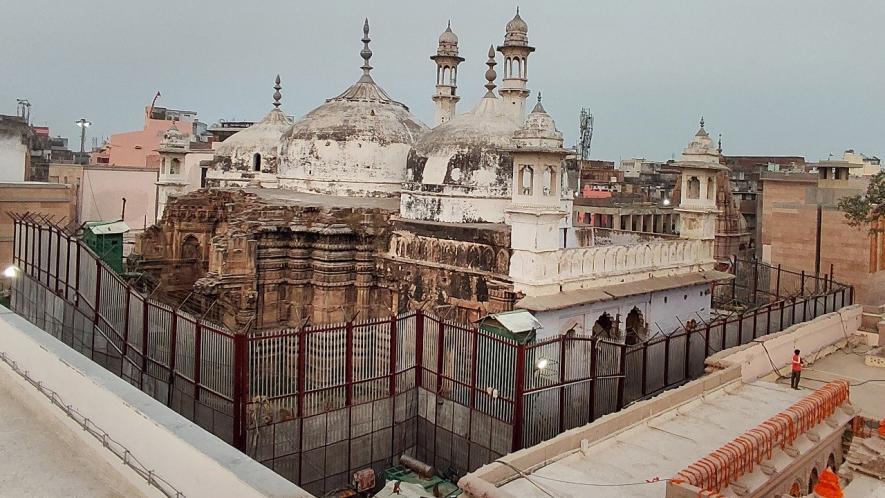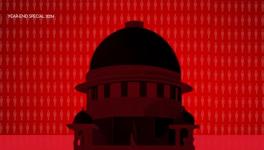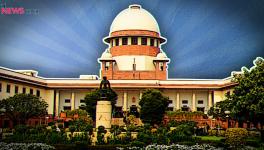Will Gyanvapi Dispute Cause More Strife or is the Temple-Mosque Gambit Over?

Image Courtesy: PTI
In December 2021, a civil judge in Delhi rejected a petition that claimed that the Qutub Minar complex in Delhi was built after destroying 27 Jain and Hindu temples and pleaded that these be re-established, and devotees be allowed to offer prayers.
“India had a culturally rich history. It has been ruled over by numerous dynasties. During arguments, the counsel for the plaintiff has vehemently argued on the point of national shame. However, nobody has denied that wrongs were committed in the past, but such wrongs cannot be the basis for disturbing the peace of our present and future," she wrote, displaying laudable wisdom. The petitioners are now litigating an appeal against this order.
A flurry of such litigation has cropped up since the Ram Janma Bhoomi-Babri Masjid dispute was decided in 2019:
-
Claims have been made or revived with respect to the removal of Shahi Idgah adjacent to the Shri Krishna Temple complex in Mathura in 2020. After this was dismissed by the civil court, the petitioners went into appeal. On May 19, 2022, the District Court admitted the plea and issued notices. Another suite on the same issue is pending before the Allahabad High Court. It is a PIL that was earlier dismissed by default in 2019, but the court has now revived it in February 2022.
-
A plea was also filed at the Lucknow Bench of Allahabad High Court by a BJP functionary seeking a directive to the Archeological Survey of India (ASI) to open up and allow a survey of 22 locked rooms under the Taj Mahal in Agra ostensibly to check if remains of temples are there. It has been claimed without any evidence that the Taj was built upon the remains of 'Tejo Mahalaya' a Shiva temple. This petition, too, was dismissed.
-
A suit was filed in connection with the Gyanvapi Masjid, although the original suit from 1991 had been stayed by the Allahabad High Court. More about this later.
-
Since litigants were repeatedly being reminded by the judiciary about the 1991 Act that prohibits any change of religious character and any lawsuits, two petitions challenging the Act itself have also been filed in the Supreme Court.
Of all these, the Gyanvapi Masjid case has taken a different trajectory – and many believe that subsequent lower judiciary orders have egregiously violated the 1991 Act. What is this Act?
THE 1991 ACT
Places of Worship (Special Provisions) Act was passed by Parliament in 1991 at the height of the Ram Janmbhoomi movement spearheaded by the BJP and its affiliates like the Vishwa Hindu Parishad (VHP), the Bajrang Dal and others.
Section 3 of this short but potent Act bars anybody from converting any place of worship of any religious denomination into a place of worship of another religious denomination. Section 4 declares that the religious character of a place of worship will continue to be the same as it was on August 15, 1947, and that any pending lawsuit or appeal about conversion will abate, that is, it will end. Section 5 lays down that the Act will not apply to the Ram Janma Bhumi – Babri Masjid in Ayodhya.
Thus all the appeals and petitions about various mosques are barred by this Act. It is for this reason that the litigants, mostly affiliated with right-wing Hindutva supporters, have started questioning the Act itself and hence also the petitions for it to be scrapped. Various RSS and BJP leaders at the lower levels have opined that the Act needs a relook, maybe by the Parliament or by the Supreme Court.
As far as the apex court is concerned, in the Ayodhya judgement, it had fully supported the Act. It had said that “history and its wrongs shall not be used as instruments to oppress the present and the future”. The cutoff date – Independence Day of 1947 – has been deliberately invoked to convey the beginning of a new era in India, wherein, hopefully, the baggage of history will be put aside and a new beginning made.
OMINOUS COURSE OF GYANVAPI MOSQUE LITIGATION
A suit was filed by devotees of Kashi Vishwanath temple in 1991, alleging that Emperor Aurangzeb destroyed part of Vishweshwar temple and built the mosque. In 2021, a group of five women was filed at the court of Civil Judge, Varanasi, claiming that they were devotees of Hindu Sanatan dharma and wanted to perform worship of various deities present in the mosque year-round. The 1991 suit was stayed by the Allahabad High Court. Meanwhile, multiple orders were passed on various pleas of both sides.
In April 2021, the Civil Court ordered ASI to survey the Mosque premises under the 1991 suit. A single Judge of the Allahabad High Court criticised this order and stayed it saying that this could not be done since the High Court had stayed the original suit. The Civil Court then took up the new plea (filed by five women devotees) and ordered the survey and videography.
The Masjid side filed a plaint for dismissing the petition under Order VII Rule 11 of the Civil Procedure Code (CPC), which lays down contingencies when a plant should be dismissed. It was argued that the 1991 Act bars any reconsideration of the place of worship, and hence the suit by five women devotees failed.
However, the Civil Judge kept this plea pending and went ahead with the survey and videography, which was then leaked to the media, allegedly by a 'private photographer' hired to help in the survey. It was alleged that a 'shivling' had been found in the survey.
On this basis, the Supreme Court was again approached under a special mention before the Chief Justice, who asked the three-judge Bench to look into the matter.
This Bench, comprising Justices Chandrachud, Surya Kant and PS Narsimha, finally ordered that the suit being heard by Civil Judge be transferred to the District Judge since he would have more experience in such matters. Meanwhile, the Bench ordered that its order of May 17 asking that namaz and wuzu be allowed to continue while the spot where shivling was allegedly found was to be sealed off and protected should be continued.
In short, the rather persuasive argument that all the orders issued by the Civil Judge were illegal since they violated the 1991 Act, has not been accepted fully. Justice Chandrachud was reported to have said that the 1991 Act did not preclude surveys from finding out remnants of other religious practices and that the validity or otherwise needs much more thought. He, however, declared that a balance has to be struck and with namaz and wuzu being allowed, this has been done.
This development appears to have put a lid on the controversy that seemed to be on the point of igniting. But it can be recalled, as argued by some, that the Ayodhya dispute too got aggravated when the Faizabad District Judge ordered the opening of locks of the mosque in 1986 and allowed the worship of the Ram Lalla idol by Hindu devotees. Rajiv Gandhi, then prime minister, had claimed that this unlocking of the gates of the mosque was his contribution to the Hindu demand.
However, that act had led to considerable momentum being imbued into the Ram Janma Bhumi movement, which saw the unlocking as a big victory. Similarly, in 1992, the Supreme Court had allowed 'symbolic kar seva' at the disputed site in Ayodhya, relying on an affidavit by then UP chief minister Kalyan Singh of the BJP that the status quo will be maintained and nothing untoward would be allowed to happen.
The 'symbolic' kar seva was to take place on December 6 1992 – what actually happened was that thousands of 'kar sevaks' stormed the masjid and demolished it, even as an aghast Supreme Court and a shocked world watched.
So, there are very valid fears in the hearts of not only Muslims but all people who want peace and harmony in the country.
WILL HISTORY BE REPEATED?
The top BJP leadership, whether nationally or in the state, has largely been quiet about these developments. Uttar Pradesh's deputy chief minister tweeted, saying 'truth will triumph' while other RSS and BJP functionaries have been quoted as saying that the 1991 Act will have to definitely be reconsidered. Some are saying that it is good that people are themselves coming forward (in filing these suits), which neglects the fact that most of the litigants are connected to the Sangh Parivar.
However, the bigger question is: will there be a resurgence of people around these slogans of temple-mosque like it happened in the run-up to the Babri demolition in 1992 and the subsequent years? This is unlikely as things stand now, and that may be a reason why the BJP top brass is also waiting and watching.
However, one thing has been achieved by the ruling BJP – the increasing attention on runaway price rise, joblessness, and economic distress in the country has been diverted for the time being. This, too, is a reason why the BJP top brass is relieved at the developments. But then, a time of reckoning will arise, sooner or later.
Get the latest reports & analysis with people's perspective on Protests, movements & deep analytical videos, discussions of the current affairs in your Telegram app. Subscribe to NewsClick's Telegram channel & get Real-Time updates on stories, as they get published on our website.
























